
This piece is a contribution to the Pre-Convention Discussion for our 32nd National Convention. During Pre-Convention Discussion, all aspects of the party’s program, strategy, and tactics are up for consideration and debate. The ideas presented here are those of the author or authors alone, and do not necessarily reflect the positions of the Communist Party USA, its membership, or their elected leadership bodies. — Editors
Karl Marx and Frederich Engels started the Communist Manifesto with the profound words “The history of all hitherto existing society is the history of class struggles.”
What did Marx and Engels mean by this statement and why is it important? We should start by how Marx and Engels define the term class.
What is class in the Marxist context?
Marx distinguished one class from another based on relations of production, i.e. which class owns the means of production, purchases and lives off others’ labor power, and which class must sell its labor to survive. Under capitalism, capitalists own the means of production and profit from the surplus value created by workers. Workers have to sell their labor power to capitalists in order to survive under capitalism or in a mixed economy building socialism. Current class descriptions or simple distinctions are noted below:
You are probably a capitalist if you primarily live from selling corporate stocks, harvesting stock dividends and capital gains from investments. If so, you probably file using an IRS 1099 form with your income tax.
You are a worker if you primarily live from your wages or salary and report your income to the IRS using a W-2 form.
There are additional members of the working class including workers not directly involved in production. For example, teachers (teaching future workers), students (studying to be future workers), family home workers, retired workers, distribution and retail workers and many others. White collar workers such as technical workers are also part of the working class. A worker can be called a blue collar worker, a white collar worker, union worker or nonunion worker, a more permanent worker versus a contract worker, a manual or hourly worker versus a mental worker, sometimes called salaried worker. It does not matter whether a worker is a blue collar, white collar or other type of collar: we are mostly workers.
You are petite bourgeoisie if you own a small business, small farm, are self-employed, and objectively go in and out of the working class. If you are in this class, you normally file your IRS tax return using a 1099 form.
Marxist overview of social classes and modes of production
Society is divided into social classes. These class classifications depend on relations of production in the basic economic structure and the historical mode of production at a given stage of development. Historic modes of production include primitive communism, slavery, serfdom, capitalism, socialism, and a future mode, communism.
Neither Karl Marx nor Frederich Engels invented the theory of classes, but they were better able to determine the fundamental role of the class struggle in the historical development of society. Marx and Engels used their exceptional philosophical understanding to demonstrate how economic development was the result of change with modification resulting from class contradictions and working class struggle.
In the case of how society changes, they were able to show how the class struggle resulted in something new and different. This change with modification is primarily due to the struggle to resolve contradictions between classes.
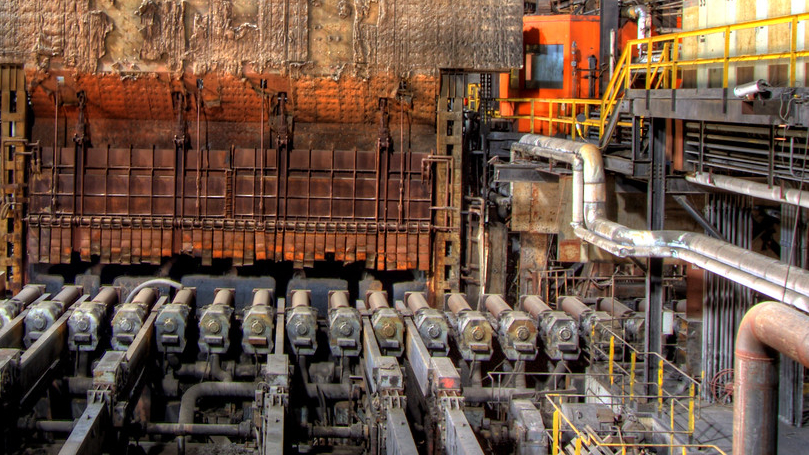
What is the capitalist class?
The term capitalist class is defined by Marxists as the class that owns the means of production and profits from the surplus value created by workers. Only labor and nature add value to production. Only labor produces surplus value. Capitalists live primarily from the sale of stocks, bonds and other capital investments, derivatives, equity, and other financial forms.
While some capitalists also get a paycheck, their main income and wealth is derived from stock ownership and other forms of investment. Most wealthy Chief Executive Officers (CEO) get stock options. These stock options are a way to reward CEO’s for helping extract profits for the capitalist class. CEO’s are given the option of buying their own corporate stock at a discount and then selling the stock later at a profit. The CEO’s also profit by keeping more of this money with lower margin tax rates; many paying a lower tax rate than most workers. The capital gains tax rate is usually lower than the tax rates paid by workers.
Many capitalists are not directly engaged in production but rather in the distribution of commodities produced by other capitalists. These capitalists live from the price difference between a commodity’s purchase price and the sale price on the market. Other capitalists profit from renting real estate. All of these capitalists rely on the production process and the surplus value created by workers in order to amass personal wealth for themselves. Examples include Sam Walton of Walmart and Jeff Bezos of Amazon. Both became wealthy from exploiting workers in retail and technology businesses.
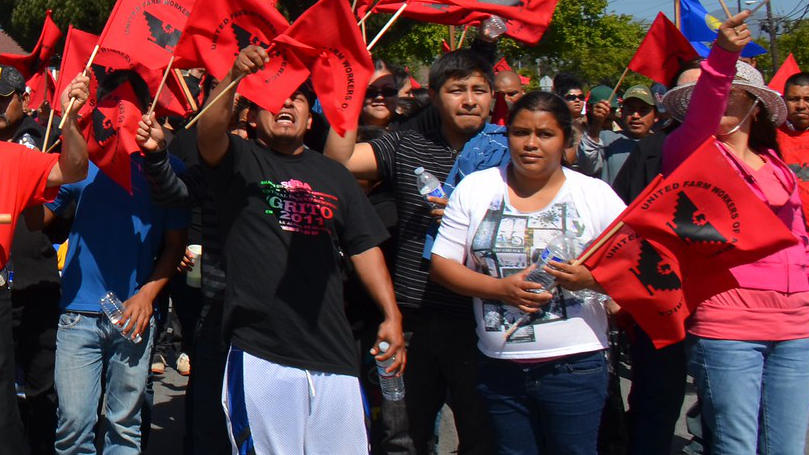
What is the ruling class?
The ruling class is a small activist section of the capitalist class that dictates political policy. This tiny group of unelected individuals privately make all the major public policy decisions that run workers’ lives. They usually act in the interest of the entire capitalist class. They are a very small group that by one estimate could fit in Yankee Stadium, less than approximately 44,000 people. Many bourgeois sociologists use a much larger number, about 1% of the population without evidence.
How does the ruling class organize itself?
Organizations like the Council on Foreign Relations (CFR) have significant influence in making imperialist foreign policy for the U.S. Administration and State Department.
The Council of the Americas focuses on U.S. corporate policy regarding Latin America and the Caribbean. Originally founded by David Rockefeller, at President John F. Kennedy’s request, as an anti-communist organization for Latin America it retains huge power over Latin American politics, helping enforce neoliberal capitalist policy. For instance, before Enrigue Peña Nieto was elected President of Mexico he was vetted by this U.S. organization. Its corporate membership includes large U.S. based corporations such as Apple, AT&T, Bank of America, General Motors, Fitch Group, and many others.
The American Legislative Exchange Council exerts a right wing influence in the writing of state laws.
Political parties such as the Republican and Democratic party, think tanks like the Heritage Foundation, Hoover Institution, Brookings institution, major universities, and many others represent the thinking of the ruling class.
Most individual capitalists in the ruling class continuously fight to maintain their economic interests and privileges. The entire class works to conserve the self-serving status quo and are therefore called conservatives.
What is the petite bourgeoisie?
The small capitalist class includes the self-employed, small business owners, and small farmers. Many members of this small capitalist class aspire to be big capitalists but usually go in and out of the working class. Republicans and most conservatives claim that their policy positions are meant to save this small capitalist class. This is not true. The main drive for bourgeois politicians is to enrich the monopoly capitalist class and its smaller ruling class. They usually also enrich themselves in the process or the end of their term of office.
The Small Business Administration considers all businesses with less than 500 employees as small businesses. That is pure nonsense as 500 employees constitute a large business. Of the 33 million small businesses in the U.S. 27 million have no employees, 5 million have less than 19 employees, and only 640,000 have more than 20 employees.
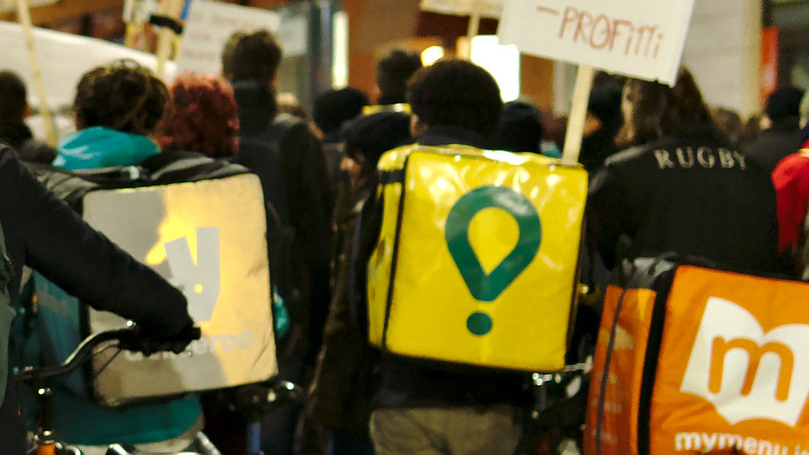
How are self-employed workers defined?
These workers file their returns with the IRS and classify themselves as self-employed. They usually have no employees. Some examples of these self-employed individuals include Uber drivers, individual contractors, self-employed professionals, grass cutters, small farmers and small family businesses which usually do not hire workers. Of the 2 million small farmers and small family-owned farms, 90%, make less than $250,000 per year. Many are barely surviving. Some of these “farmers” are retirees who own rural land with a single cow, qualifying for lower property tax rates. Many rural workers, small farmers and small retail businesses have abandoned their land, homes and businesses in rural areas due to loss of manufacturing and retail jobs to large monopoly corporations. Young people leave these rural areas looking for jobs, education and social connection. Some of these rural towns now look devastated and abandoned.
Additional information on small businesses and farmers
About 50% of small businesses fail in 5 years, 75% in 10 years. Small businesses cannot complete with large monopolistic enterprises such as Walmart and Amazon. Lack of capital due to less access to bank credit and higher interest rates than large corporations contribute to their failure.
The vast majority of most small proprietors tend to go in and out of the working class due to capitalist tendencies toward monopoly. Small business proprietors can join the working class when they sell their labor to survive in the struggle adverse circumstances.
Why must there be a discussion about small proprietors?
This class of people can tip the balance from one sector of the ruling class to another sector during elections and other struggles. This class normally exercises significant influence in turning the ruling class towards the right, with fascism as its extreme form. Within the working class, these elements try to provide conservative leadership.
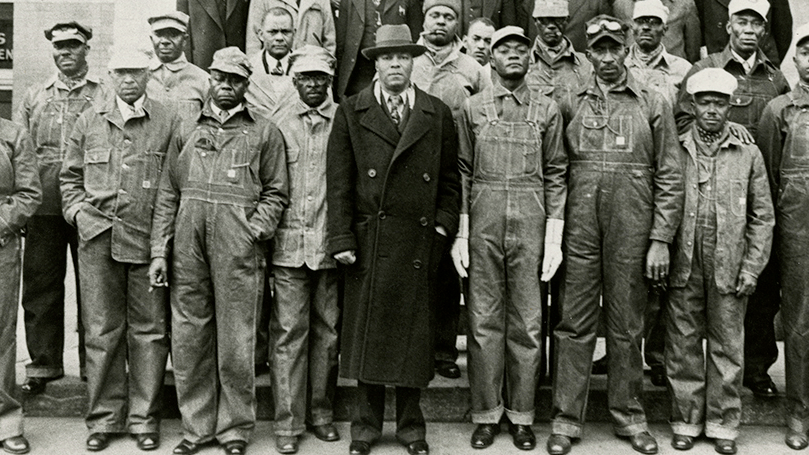
What is the working class?
Workers are those that have to sell their labor power to the capitalist class in order to live. Why do capitalists hire workers? Only workers’ labor produces value. This extra value is called surplus value. The working class is the vast majority of the population in the U.S. The size of the U.S. working class is approximately 200 million people. This number includes employed workers, family care at-home workers, unpaid caregivers, retirees, students and the young.
Why do we sometimes use the term working people instead of working class?
The term working people includes those that work without jobs! Marxists usually call this class the petite bourgeoisie. Self-employed small farmers make up less than 2 million people. They and their families work their own small farms, trying to complete against publicly subsidized big corporate agribusinesses. Self-employed workers make up about 27 million people, many temporarily or permanently unemployed, Uber drivers and others classified by corporations as contractors to deny them labor protections, are also included. Small family-owned retail businesses, 5 million people, are barely holding on trying to complete against a few large corporations like Walmart and Amazon.
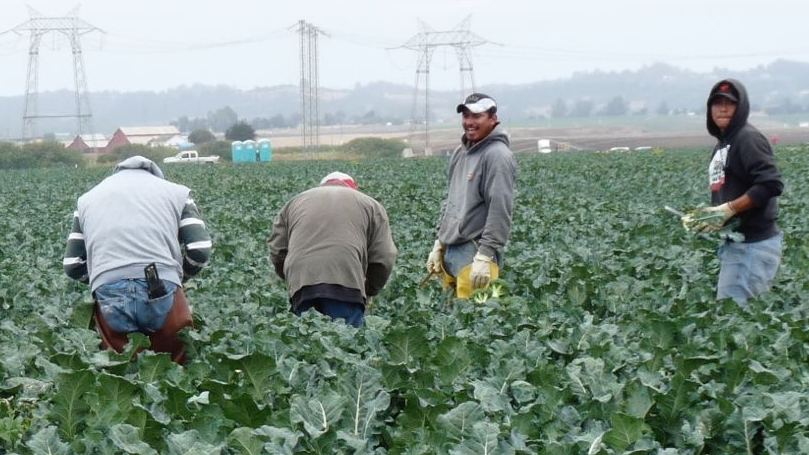
Can workers make common cause with the petite bourgeois?
Yes, absolutely! The ruling class claims an interest in promoting small farms, rural people and the middle class. It exploits all, ruining working people and the petite bourgeoisie alike. Ruling class lies must be exposed and unity platforms identified for all working people. The petite bourgeoisie often goes in and out of the working class and has a big influence on elections.
What is the real truth about the ruin of working people?
Capitalist exploitation of workers privatizes the wealth produced socially by workers. Wealth ends up in a small number of hands, causing economic inequality.
- Wages are not keeping up with inflation
- Small businesses are ruined by large monopoly corporations such as Walmart, Amazon, and other such discount retailers
- Unemployment/partial employment sends working people into the ranks of Uber, eBay, Amazon, and vulnerable small businesses
- Rural communities were devastated when large corporations moved their manufacturing (also called offshoring) to other countries in pursuit of lower wages and higher profits
- The central banker, U.S. Federal Reserve, ruins a lot of small businesses by raising interest rates when inflation threatens corporate profits
Are all working people equally aware of how their class is being ruined by capitalism?
Many failing small business owners, small farmers, self-employed and professional people, turn their fury at the working class instead of the capitalist class. Many had illusions of becoming big capitalists and tend to be ideologically attuned with capitalist values. Some have thrown their lot with the rich capitalists class because they hold conservative values. Many have succumbed to the big lies of capitalism: small businesses fail “because of large generous social program for the undeserving,” taxes and regulations are “too high on small businesses due to generous social programs.” One of their common complaints is “that liberals, progressives, socialists and communists” want to protect the “undeserving.” Remember Mitt Romney’s “makers versus takers?”
The latest hate message is that unauthorized immigrants are “invading” the country and using up limited economic resources. They are falsely blamed for crime, drug trafficking and other social ills. Sometimes immigrants are wrongfully accused of voting; not even immigrants with permanent residency can vote. Only citizens can vote or use the limited existing social services.
The capitalist political order is ruining rural America with the fake notion that progressive and liberals are ruining rural “good American values.”

What other methods are used by the ruling class to rule and make more money?
The primary method used by the U.S. ruling class for super profits is racism and white supremacy, male supremacy, suppression of unions, and U.S. imperialism.
Racism is a social construct expressed in laws and social practice, used to justify the super exploitation of people of color. Gender oppression is also used for super exploitation. People of color and women suffer from lower wages and other forms of oppression under capitalism. While laws have been won against racism and gender discrimination, the burden of proof is placed on the victim while the corporations hire large law firms to protect them.
What are some of methods used by U.S. imperialism?
U.S. imperialism is the global rule by U.S. monopoly financial banks and global corporations, used to extract super profits internationally for the U.S. ruling class.
Corporate monopolies and financial controls are used by U.S. imperialism to assert political and financial control world wide. The imposition of neoliberal policies by U.S. corporate and credit rating groups, international rule making, other financial mechanisms, and regime change wars are all weapons in the arsenal of the ruling class.
The arms trade, NATO, the buildup and use of U.S. and allied military forces, “regime change,” sanctions and other coercive means result in undermining international working class solidarity.
The U.S. and its allies made the U.S. dollar the global reserve currency. Most payments between countries are paid in U.S. dollars through the Society for Worldwide Interbank Financial Telecommunications (SWIFT) system. SWIFT is a global payment system controlled by the U.S. and its allies. The U.S. digitally creates U.S. dollars. As you can imagine, this unlimited currency power is self-serving and helps make U.S. imperialism a dominant power in the world.
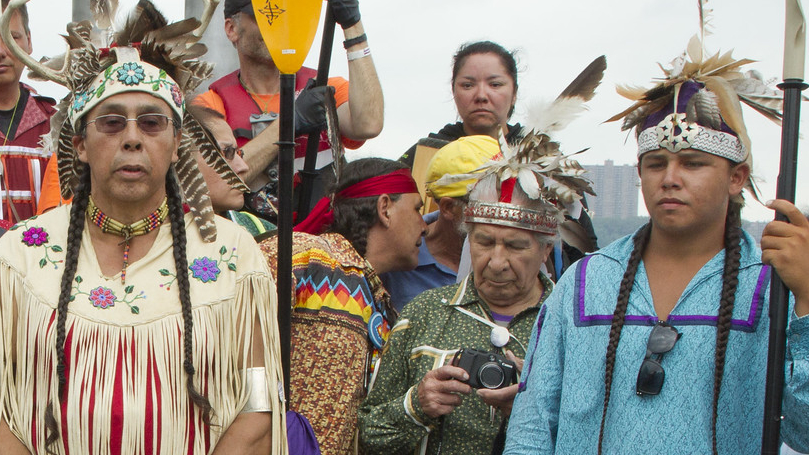
What is the role of imperialism in capitalism?
The rich in the U.S. become much richer by exploiting workers around the world, paying them less than in the U.S., exporting capital versus products, imposing ruinous interest rates to less developed countries, causing huge debt, and forcing self-serving terms in trade agreements.
U.S. imperialism established the the U.S. dollar as the reserve currency of the world. By giving itself the ability to create dollars, initially backed by gold and later without any backing, U.S. imperialism also established global rules favorable to U.S. corporations.These actions helped the U.S. become the largest global economy and the largest military power in the world after World War II. After the dissolution of the former Soviet Union, U.S. imperialism became the sole super power in the world.
U.S. imperialists use military and economic violence to try to defeat progressive movements in developing countries. They foment war, coups, and velvet revolutions against countries that choose the socialist road or independence. They weaponize economic power to embargo and sanction countries around the world.
U.S. imperialism is declining due to its systemic contradictions
Below are some examples of these contradictions, including some identified by the Tri-Continental Institute:
- The contradiction between moribund imperialism and an emerging successful socialism led by China
- The contradiction between the ruling classes of the narrow band of G7 countries and the political and economic elite of capitalist developing countries, led by U.S. imperialism
- The alliance between the broad urban and rural working class and sections of the lower petite bourgeoisie of developing countries versus U.S. imperialism
- The struggle between advanced rent-seeking finance capital versus the needs of the working classes, and sections of capital in non-socialist countries, regarding the organization of society’s requirements for investment in industry, environmentally sustainable agriculture, employment, and development
- The contradiction between the working classes of developing countries and their domestic capitalist ruling classes
- U.S. imperialism versus nations strongly defending national sovereignty
- The developed capitalist countries’ millions of workers, including in the unemployed or underemployed poor workers, versus the bourgeoisie who dominate these countries
- Capitalism versus the planet and human life
Some general conclusions
A broad all-people’s front is developing against U.S. imperialism, countering its threat to the economic well being of U.S. workers, and peace, justice and equality globally.
Tri-Continental Institute attributed this development to popular sentiment that capitalism is the enemy of the peoples of the world who desire a just, peaceful, and egalitarian world. They also point out the struggle of socialist or independent developing countries and political forces for their sovereignty leading to challenges to the imperialism.
Some manifestations of this global all-people’s front include the People’s Republic of China and the Russian Federation cooperating as a counterbalance to U.S. imperialism, creation of BRIC and BRIC+ to end reliance on the SWIFT system, China’s Belt and Road Initiative building infrastructure projects in developing countries to help pull them out of poverty and debt.
Developing countries seek a multilateral world where they have a seat at the decision making table and can grow out of poverty, creating a new world order with common prosperity.
Which class rules in the U.S.?
Marx stated, “the class which has the means of material production at its disposal, has control at the same time over the means of mental production.”
The ruling class uses money in politics to undermine democracy. Corruption and manipulation of information by U.S. corporate owned media are the main tools used to control working people in this country.
This tiny ruling class substitutes itself for democratic rule. The word democracy means power to the people. The ruling class will not give up power to the people without a struggle.
The ruling class manufactures consent through media manipulation and other means. Media manipulation includes fake news, providing no or incomplete information, failure to provide historical context. Indoctrination in our schools, trade associations, foundations, hired think tanks, and many other means add to the impact of media manipulation. Many corporate sales practices manipulate working people to be consumers.
As the Communist Manifesto states, the main task of the working class is to gain political supremacy, to wrest all capital from the bourgeoisie, and to centralize all instruments of production in the hands of the democratic state, i.e., of the proletariat.
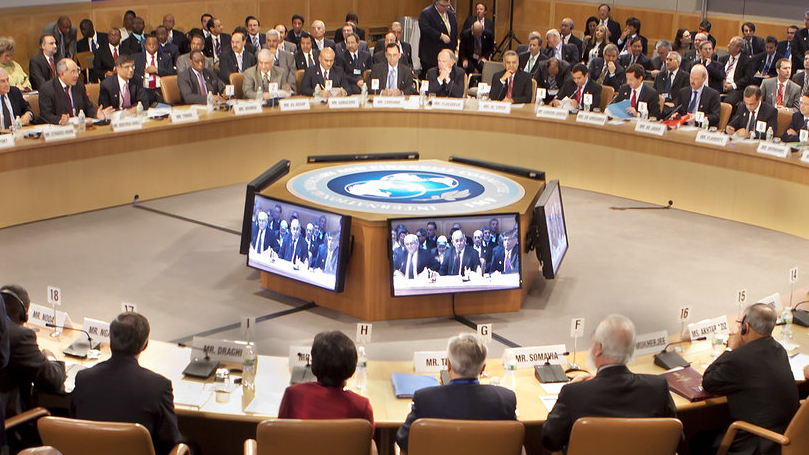
While the working class is the largest class in the U.S. the much smaller ruling class lords over all of us
The ruling class owns the largest factories and other corporate workplaces, banks, major retailers, stock, bonds, private equity, derivatives, and much more.
The ruling class controls the government, the state, using money in politics and corruption of public officials. Lobbying by former regulators and legislators, taking job offers with large salaries to continue to lobby their former legislature or government regulators, and taking highly paid jobs in private corporations for services rendered to the ruling class are manifestations of this corruption. All of these forms of corruption have been made legal by these ruling class servants. There is also a rotating door policy where former government officials are posted in ruling class think tanks to continue to manipulate voters. They act as “experts”, used by corporate media to manipulate people in the interest of the ruling class. Once the ruling class sector wins office again, these former government officials are brought back into government service.
The ruling class controls state legislators through their political parties and employer associations such as the American Legislative Exchange Council, American Petroleum Institute, and other trade organizations, and many other methods.
The ruling class dictates foreign policy through the Council on Foreign Relations, Americas Council, the Atlantic Council, and many other organizations promoting the “Washington Consensus.”
The ruling class exports capital and extracts surplus value from developing countries through international banks like J.P. Morgan/Chase, Bank of America, HSBC, Citigroup, Blackrock, and Vanguard.
Do the people in the U.S. decide on policy issues?
The U.S. two-party system is just another simulation of democracy. It is a winner-take-all system by two capitalist parties with huge limitations.
Working people need democratic reforms such as the end of the role of money in politics or, as someone once said, “to separate economic power from political power.”
In the U.S. the two large legal parties represent different sectors of the ruling class with slightly different social agendas.
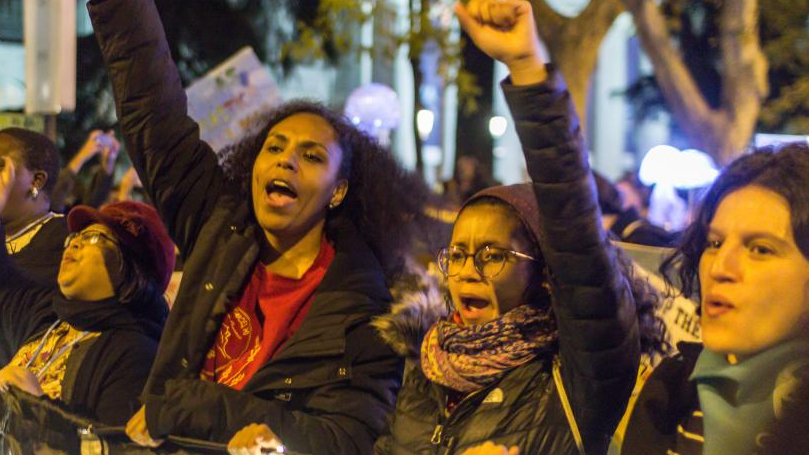
Who governs?
A scholarly paper written by Princeton University Professor Gilens and Northwestern University Professor Page, Testing Theories of American Politics: Elites, Interest Groups and Average Citizens, helps to answer this main question. They observe that “economic elites and organized groups representing business interests have substantial independent impacts on U.S. government policy, while average citizens and mass-based interest groups have little or no independent influence.”
They conclude, “if policy-making is dominated by powerful business organizations and a small number of affluent Americans, then America’s claims to being a democratic society are seriously threatened.”
In the 1939 movie by Frank Capra, Mr. Smith goes to Washington, Jeff Smith exposes the corruption in government. Jeff Smith realizes that real power rests elsewhere other than congress.
Bruce Berlin, in a contribution to the HuffPost titled America’s Political System Thrives On Corruption, shows how decisions are made in government. Bruce cites the example of a congressional representative who created a prescription drug benefit aligned to the interests of big pharma. This congressman received contributions from drug companies and then helped pass legislation that forbade the government from negotiating with drug manufacturers, ensuring high medical drug prices. Payday came when this congressman left Congress and later was hired at a salary of $2 million per year.
Does that mean that working people should be indifferent to which party wins? We cannot afford to be indifferent!
A serious political party of working people will look at every opportunity to improve the working and living conditions of working people, expand democracy in the long-term interests of working people, and organize working people to struggle in unity for their own class interests.
Is the ruling class of one mind?
The ruling class is divided, mainly between those who focus on short term vs long-term profits.
Short term focused ruling class members place immediate wealth accumulation ahead of their long-term interests. They are willing to intensify the class struggle in the interest of short-term profits, putting their capitalist system at risk.
Long term focused ruling class members are trying to look after the long-term interests of the ruling class. They propagate ideas such as “inclusive prosperity” to keep the pitchforks at bay. They prefer the “boil the frog slowly” strategy rather than create the conditions for a potential uprising. They are more willing to compromise with the working class because it is in the long-term interest of capitalism.
Keys to working class success: unity and class consciousness
From the smallest of class struggles to the largest, unity in action within the working class is key to victory. The experience of working people in their workplaces and neighborhoods demonstrates that only by joining together in a united struggle for working class interests and demands can they win. This is the guiding principle of all unions and people’s organizations. In united struggle there is strength!
As united as the working class itself needs to be, it cannot be the sole force in these struggles. The ruling class is powerful, with great resources at their command. Many of the key needs of working people cannot be won by the trade union movement or the working class alone. There are other major social forces whose interests substantially parallel those of the working class. Unions are engaged in coalitions with communities of color, immigrant rights advocates, women, students, seniors and retirees, the LGBTQ community, and other people to increase their combined ability to win against a powerful enemy. From strike struggles to legislative initiatives to the fight for the White House, workers must build unity with these coalitions to achieve progress. Building unity requires relationships of equality, trust, mutual respect, understanding and shared common interests.. There is a constant need to reinforce and defend this unity. In addition, international working class solidarity is needed in this interconnected global economic system.
An All People’s Popular Front is key to winning the struggle against racism, gender inequality and for working class political power, for socialism.
Images: NY/YCL; Steel plant reheater by Jonathan Haeber (CC BY-NC 2.0 Deed); United Farmworkers 3 mile march for #immigration reform in #Salinas by Steve Rhodes (CC BY-NC-ND 2.0 Deed); Fighting for rights in the gig economy by Davide Alberani (CC BY-SA 2.0 Deed); African Americans who maintained railroad locomotive engines had to sue the Brotherhood of Locomotive Firemen and Enginemen all the way to the Supreme Court to gain admission to the union in 1944. Members involved with the lawsuit pose with A. Philip Randolph (1889-1979), President of the Brotherhood of Sleeping Car Porters, and prominent civil rights leader, circa 1940-1944. AFL-CIO Still Images, Photographic Prints Collection; Farm workers harvesting cauliflower in California’s Salinas Valley by PAC55 (CC BY-SA 4.0 Deed); Skilled women workers helped build SS George Washington Carver by E.F. Joseph (NY Public Library); Treaties with Indigenous Peoples in Focus on International Day by UN Photo/Rick Bajornas (CC BY-NC-ND 2.0 Deed); Members of the International Monetary and Financial Committee by IMFC (CC BY-NC-ND 2.0 Deed); Principles for a just recovery by Victor Barro (Creative Commons 4.0); Boeing Machinists rallied in 2013 against the phase-out of their defined-benefit pensions by Jim Levitt (LaborNotes).


 Join Now
Join Now